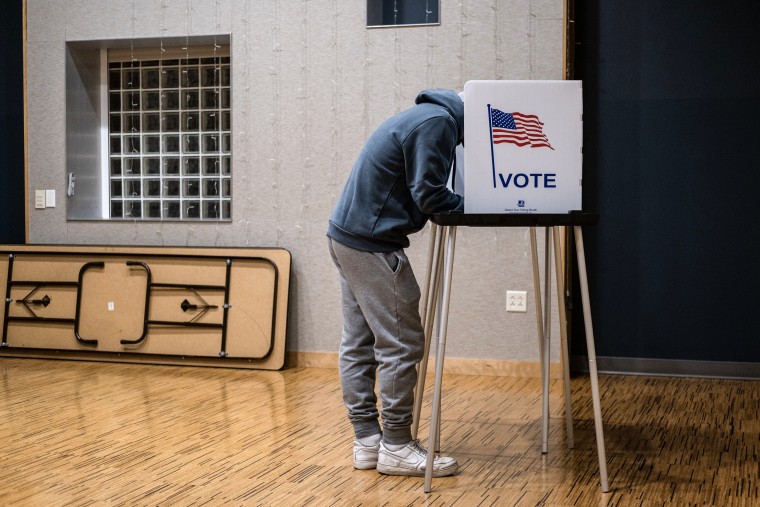Republicans had stronger voter turnout than Democrats did in the 2022 midterms, as the GOP narrowly won control of the U.S. House of Representatives — but failed to win the U.S. Senate.
Just a sliver of the electorate — 6% of voters — crossed party lines in last year’s election, reflecting the small size of the swing vote that’s truly up for grabs in this increasingly politically polarized nation.
And just slightly more than one-third of all eligible voters participated in all three of the most recent national elections — 2018, 2020 and 2022 — demonstrating how fluid the electorate is from cycle to cycle.
These are the major findings of a new Pew Research Center examination of the 2022 midterm electorate, which matched Pew’s 10,000-person online panel to public voting records validating that the respondents actually voted.
According to the study, 68% of all voters who participated in the 2020 presidential election turned out in the 2022 midterms, but former President Donald Trump’s voters turned out at a higher rate (71%) than President Joe Biden’s voters did (67%).
(Note: The Pew study is a national survey, so it helps explain how Republicans won the national popular House vote in the 2022 midterms, but it doesn’t help explain why the GOP fell short in important statewide contests in Arizona, Georgia, Nevada and Pennsylvania.)
The Pew study also finds that there were few political defectors in the 2022 midterms compared to the 2020 presidential election.
Overall, just 6% of voters who voted for both president in 2020 and for a U.S. House representative in 2022 crossed party lines between elections or voted for a third-party candidate in either election.
Another way to look at this shrinking up-for-grabs middle: 95% of the voters who voted for a Republican congressional candidate in 2018 voted for the same party in 2022, compared with 92% of Democratic voters who stuck with the same party between the two cycles.
Finally, the Pew poll shows that while turnout was historically high in 2018, 2020 and 2022, just 37% of eligible voters voted in all three election cycles.
Another 8% of all eligible voters voted in 2018 and 2020 -- but not in 2022 — and those voters were disproportionately Democrats (55% Democratic, 40% Republican).
And another 8% voted in 2020 and 2022 — but not in 2018 — and those voters were disproportionately Republicans (57% Republican, 40% Democratic).
Thirty percent of all eligible voters didn’t participate in any of the elections in 2018, 2020 or 2022.
These numbers, Pew concludes, suggest that “both parties have plenty of potential supporters on the sidelines in any given election.”

